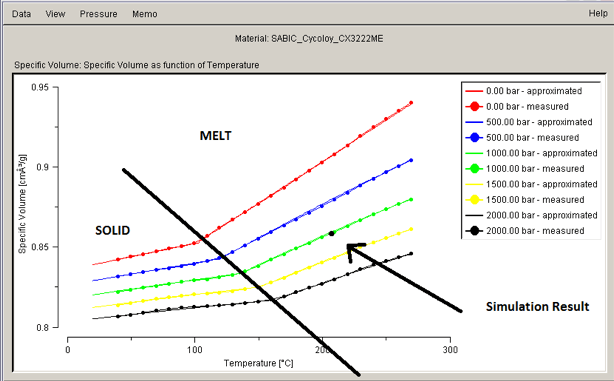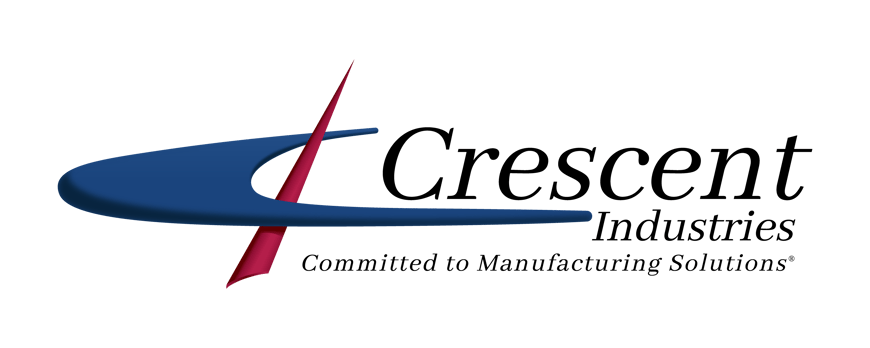Scientific Injection Molding Process & Benefits
In an industry as competitive as plastic injection molding, being able to produce high quality products quickly, efficiently, and accurately is vital. In an effort to improve production processes and reduce costs, many manufacturers are turning to scientific injection molding.
This whitepaper will dive deep into scientific injection molding, examining the steps involved in the process, the benefits it offers, and how to implement it into production.

What is Scientific Injection Molding?
Scientific injection molding is a production method that uses comprehensive data collection from testing and analysis to optimize the manufacturing process, ensuring quality and replicability of plastic parts.
This method also separates the three molding stages—fill, pack, and hold stages—using a process referred to as decoupled injection molding.
Scientific Molding vs Traditional Molding
Unlike traditional injection molding, which relies on a trial and error method for process optimization, scientific injection molding follows clearly defined steps to continually improve production processes.
The simplicity of traditional injection molding can sometimes result in defects like warping, voids, or sink marks due to uneven pressure distribution. The decoupled process helps address these issues by evaluating the hold parameters of each of the stages to reduce the inconsistencies that cause fluctuations in the finished plastic part.
While the traditional injection molding uses a single shot with constant pressure to fill the cavity in all three stages of molding, scientific injection molding separates each stage with precise control over each.
The scientific injection molding process follows these decoupling stages:
- Fill: The cavity is filled under a controlled speed/velocity to around 95-99% fill.
- Pack: The molding machine switches to pressure control, and the cavity is filled to the brim by compressing the plastic.
- Hold: The part is left to cool and stabilize.
Another difference between scientific and traditional injection molding is that traditional methods rely on machine settings to optimize and solve problems with the molding processes. As such, you would have molding engineers “playing around” with different settings so as to achieve high-quality plastic parts. However, research has established that machine settings have very little correlation to the final plastic part’s quality.
This research is what has formed the basis of scientific injection molding, where the manufacturing process focuses more on understanding and controlling the material behavior and the physics of the molding process.
CORE PRINCIPLES OF SCIENTIFIC INJECTION MOLDING
The scientific molding process is designed around a few key principles to ensure top quality and maximum efficiency.
- Data-Driven Process Control: Scientific injection molding involves the use of sensors and monitoring systems to collect real-time data on various process parameters, such as temperature, pressure, and flow rate. This data is then used to understand the relationship between process parameters and the quality of the final plastic part.
- Material Monitoring: This principle involves understanding the plastic materials that you’ll be working with in terms of their properties and behavior. This is essential for tailoring process settings rather than relying on machine settings. To do this, you can monitor the materials’ melt flow, viscosity, thermal conductivity, and shrinkage.
- Cycle Time Optimization: Cycle time is the amount of time it takes for a mold to go through the full molding cycle, from injection to ejection. If this cycle is too long or too short, you risk compromising the quality of the final plastic parts and incurring high production costs. Scientific injection molding helps to find the right balance between faster cycle times and the highest part quality by analyzing and optimizing process parameters.
- Process Control and Optimization: Scientific molding takes the trial and error out of the manufacturing process. It brings a level of stability and optimization to the manufacturing process by continuously monitoring and adjusting molding parameters. This is essential for making sure that the molding process can repeat the same conditions for each production run, leading to uniform parts with high precision.
- Advanced Monitoring and Quality Assurance Techniques: Scientific injection molding uses real-time or near-time monitoring to identify defects and inconsistencies in the molding process. It relies on the use of in-mold sensors to provide real-time feedback on conditions inside the mold. These sensors monitor critical variables and allow for immediate adjustments.
BENEFITS OF SCIENTIFIC INJECTION MOLDING
Scientific injection molding offers significant benefits to manufacturers, clients, and customers alike.
Enhanced Product Quality and Consistency
The iterative process of hypothesis testing, analysis, and process optimization ensures that, as a manufacturer, you fine-tune every aspect of the molding process to get the most optimal performance. This is vital for producing high quality plastic parts.
The decoupling process in scientific injection molding reduces the variations that usually occur in traditional injection molding by independently controlling each phase of the process. This separation allows for precise adjustments tailored to the specific needs of each phase, which is vital for consistent part quality and reduced occurrence of defects such as warping, sink marks, and voids.
Moreover, the monitoring process in scientific injection molding prevents deviations from the set parameters. It relies on advanced sensors within the injection molding machines to monitor variables such as pressure, temperature, and flow rate. Any deviations from the optimal parameters immediately flag the need for adjustments, ensuring product consistency and minimizing the risk of defects.
Increased Production Efficiency
One of the biggest roadblocks to production efficiency is downtime caused by factors such as equipment malfunctions, material shortages, and human error.
Scientific injection molding takes a proactive approach to minimize downtime by employing automation, using sensors that detect and predict any malfunctions. Continuously monitoring the molding presses performance metrics like temperature and pressure, allows for detection of potential malfunctions early enough to take preventive measures and reduce downtime.
Reduced Waste and Costs
Scientific injection molding reduces costs in two major ways: minimizing molding material waste and decreasing energy consumption.
One of the biggest sources of waste in the molding processes is material scrap generated during production. By optimizing processes before product runs, scientific injection molding helps prevent waste of time and energy.
Additionally, scientific injection molding helps to reduce energy consumption by optimizing production parameters and equipment settings, such as temperature and pressure. Some advanced injection molding machines come equipped with energy-saving features that help reduce the electricity consumed during production.
KEY PROCESSES IN SCIENTIFIC INJECTION MOLDING
Now that you understand what scientific injection molding is and its benefits, let’s look at how exactly the process works and what makes it better than traditional injection molding.
Mold Design Optimization
This involves refining and improving aspects of the mold design itself. Mold design optimization includes processes like ensuring geometrical precision of the part, optimizing the layout of the mold cavity and runners, tackling inefficiencies in the cooling system, and improving the ejection mechanism. These processes are critical for achieving the best possible outcomes in terms of product quality and production efficiency.
Here is a detailed breakdown of some of the elements of mold design optimization:
Geometric Design
This refers to defining how the final plastic part will be shaped, its dimensions and features. Geometric design optimization such as the outer surface contours, internal features, and other structural elements.
Mold design optimization helps you ensure that you get these factors right for maximum efficiency and quality. It does so by first identifying potential challenges you might encounter that affect moldability, such as complex shapes, thin walls, and undercuts. Once identified, you can modify the mold geometry to address these challenges.
For instance, if you realize that the final plastic part has thin walls that may cause warping or sink marks, geometry design optimization can suggest different solutions, such as adjusting the wall thickness or adding ribs for reinforcement.
Runner and Gate
The runner and gate system controls the flow of molten plastic into the mold cavity. As such, this system must support the uniform distribution of molten plastic to prevent defects like flow lines, air traps, or short shots, which can affect the final product. To achieve this, you can integrate optimization into the design by addressing factors such as the gate location, pressure, and gate vestige.
Cooling System
After molten plastic material flows into the mold cavity, it must cool down before the molding device can eject it. Uniform cooling is just as important as the plastic pressure and flow control during the injection process because it helps minimize defects in the final parts, such as sinking, warping, and uneven surfaces and walls.
Mold design optimization can help address this by helping you in choosing the best materials for the cooling channels, implementing advanced cooling techniques such as conformal cooling, and strategically positioning cooling channels throughout the mold.
Ejection System
Once cooled down and in solid form, the plastic part is then ejected from the molding machine. This process is important because poor ejection mechanisms can lead to part damage and production inefficiencies. To optimize the ejection system, consider factors like the geometry of the molded part, material properties, mold surface treatment, ejection force, and timing.
Precise Control of Molding Parameters
Molding parameters refer to the specific variables that you set in the molding machine to achieve the part quality you want. These variables include the melt and cooling temperature, injection and ejection pressure, mold temperature, back pressure, and more.
Scientific injection molding plays a vital role in controlling these parameters to achieve production efficiency and high-quality parts by eliminating the guesswork and consistent back and forth that is inherent in traditional injection molding.
It does so by incorporating strategies such as:
- Design of Experiments (DOE): DOE refers to controlled experiments that study the effect of different molding parameters on the overall production performance and part quality. This strategy allows you to identify the most optimal process settings for the highest quality of the final plastic products.
- Closed-Loop Control Systems: These systems help maintain optimal molding conditions by automatically adjusting the parameters without needing human intervention. Therefore, in case of fluctuations or disturbances, the system adjusts the parameters, ensuring consistent part quality and production performance.
- Statistical Process Control (SPC): SPC relies on statistical techniques to collect and analyze data on molding parameters over time. These methods are essential for finding the most optimal conditions for production, including deviations and tolerances. This way, you can promptly address any fluctuations from optimal and specified tolerances and prevent quality issues.
- Simulation and Modeling Tools: These tools work by replicating the same molding environments to determine the effectiveness of production processes and the quality of plastic parts under different parameters. You can use tools such as computer-aided engineering (CAE) software to help simulate these parameters in virtual environments before you start the actual molding process, which can help reduce costs and improve efficiency.
Advanced Monitoring and Quality Assurance Techniques
Even after implementing optimal molding parameters, scientific molding requires conducting extensive ongoing monitoring so that the molding outcomes and processes remain effective. This is because conditions change, and what may have initially worked may no longer produce the best quality of products.
To incorporate continuous monitoring in your injection molding process, you can adopt several techniques, including:
- Real-Time Process Monitoring: Advanced monitoring also includes real-time tracking of the injection molding process. This is essential because it helps with detecting issues in the production process early and implementing remedies with minimal disruptions.
- Automated Inspection Systems: Continuously ensuring that the final product meets quality standards is also essential. While human inspection is an option, it may not be as reliable as automated systems. To implement automated inspection, you can leverage systems such as lasers or sensors to inspect injection molded parts, which are faster than human-led inspections and less error-prone.
HOW TO SCIENTIFIC INJECTION MOLDING IS IMPLEMENTED IN PRODUCTION
Understanding how scientific molding works is one thing; implementing it into a production process is another. This section will discuss how and some best practices.
Design and Tooling
The first step during the implementation of scientific injection molding is to find the right specifications for the molding system in relation to the mold design.
Start by getting the right team in place. Experienced mold designers and tooling engineers are essential for optimizing design and tooling, making sure you get the product quality you need without cutting corners. Implementing a preventive maintenance program will also help keep your molds and tools in the best shape possible. Wear and tear on molds can negatively affect production, leading to downtime and low-quality end products, so regular upkeep is essential.
Process Development
The process development stage involves establishing molding parameters that help you achieve product efficiency and high product quality.
During this stage, you can utilize several strategies, such as DOE and simulation, to find the most optimal settings for the molding process. It’s also a good practice to have process windows or tolerance levels for process parameters. These levels are essential for ensuring that the manufacturing process doesn’t deviate from acceptable operating conditions, which could then cause defects in the final product or increase the amount of scrap.
Providing training and support to staff involved in the molding process at this stage can help implementation go more smoothly. Scientific injection molding, though an improvement on traditional molding, is quite different. Investing in training programs for your staff ensures that these newly optimized processes are being implemented correctly, allowing you to make the most of the upgrade from traditional to scientific injection molding.
Training is also essential for preventing production downtime caused by lack of familiarity with the new processes. Make sure to do this on a continuous basis so as to instill a culture of continuous learning, especially as the field of scientific injection molding is still evolving.
Production and Monitoring
Even when production finally starts, your work isn’t done. Sure, your new production processes may work now, but as time goes on and conditions change, the parameters and settings you had integrated may no longer work.
Therefore, adopting continuous monitoring—of both the process and final product—is crucial. This step is essential for safeguarding your production process from deviations other than what you had originally envisioned, leading to inefficiencies and additional costs. Automation can be a great solution for monitoring due to its high accuracy rates.
You can also establish a feedback loop between production and process development. Data from product runs and quality control checks can help inform process development by identifying areas you can refine or optimize.
It's important to foster a culture of continuous improvement in the production process by encouraging communication and collaboration in production teams. This is essential for improving production processes, especially if you solicit input from molding machine operators and others who work directly with the products and systems.
THE FUTURE OF SCIENTIFIC INJECTION MOLDING
Data indicates that the market for plastic injection molding will reach over $266.1 billion by 2030. This directly translates to innovations that help gear the industry toward adopting scientific injection molding.
Moreover, as new social and environmental issues emerge in public consciousness, the industry will have to adjust its production processes to address these issues. This need for adaptability will likely lead many manufacturers away from traditional molding methods and toward scientific injection molding.
Here are some key trends and developments to expect in the future for scientific injection molding:
Expected Growth in Medical Injection Molding
Medical injection molding is one of the fastest expanding use cases for scientific injection molding. Injection molded plastics are in high demand in the medical industry due to the potential for biocompatibility features, additive manufacturing capabilities, and micro-parts. Scientific injection molding helps ensure that these products meet medical standards of hygiene and precision.
Integration of Industry 4.0 Technologies
Scientific injection molding is expected to further adopt emerging technologies such as artificial intelligence (AI) and Internet of Things (IoT) to enhance production efficiency and product quality. Smart and connected machines support real-time monitoring, which is essential for quick adjustments to production processes should errors or inconsistencies occur.
GET OVER 75 YEARS OF INJECTION MOLDING AND TOOLING EXPERTISE
Scientific injection molding is the future of plastic molding, and it's key to remaining competitive in a rapidly evolving industry. But implementing this process requires a strategic approach to ensure consistency, quality, and efficiency.
One way to successfully leverage the benefits of scientific injection molding is by choosing a strategic partner. At Crescent Industries, we use scientific injection molding to provide injection molding solutions that range from plastic injection molding design to custom injection molding and post-processing operations. So whether you’re in the medical, defense, or OEM industry, we can help.

